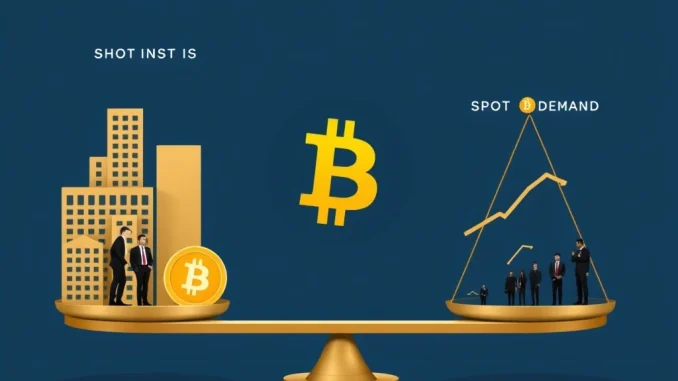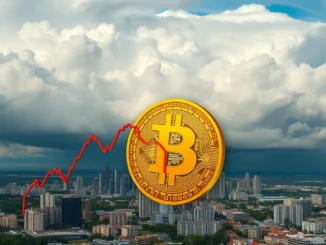
Hey crypto enthusiasts! Let’s dive into the current state of the market. Despite some notable players stepping up their game, the latest Bitcoin price action reveals a complex picture. While Institutional Bitcoin buying continues, it appears insufficient to counteract a significant dip in direct user demand. This dynamic is raising questions about future price trajectory.
Understanding Bitcoin Spot Demand
So, what exactly is Bitcoin spot demand? It refers to the direct buying of BTC on exchanges by individuals and entities for immediate delivery, rather than through derivatives or other indirect means. Think of it as people buying Bitcoin right now because they want to hold it.
According to data analyzed by on-chain platform CryptoQuant, this type of demand has seen a substantial drop. Over the past 30 days, demand has reportedly shrunk by 895,000 BTC. This decline is a key factor contributing to Bitcoin remaining largely range-bound around the $109,000 level recently, despite being up slightly week-over-week.
The Role of Institutional Bitcoin Buying
On the other side of the equation, we have the big players. Institutional Bitcoin buying, particularly through new spot Bitcoin ETFs and companies like MicroStrategy (MSTR), has been a major narrative driving market optimism. These avenues provide traditional investors easier access to gain exposure to BTC.
However, the pace of these institutional purchases has reportedly slowed compared to the levels seen in December. While still significant, the inflow from these channels hasn’t been enough to absorb the selling pressure or compensate for the broader reduction in spot market activity.
What On-Chain Data Tells Us: A BTC Market Analysis
Beyond just price charts, on-chain data provides valuable insights into market health. A critical indicator often watched is the Bitcoin mempool – the waiting area for transactions before they are confirmed on the blockchain. An empty or low mempool typically signals reduced network activity and, often, weak retail interest.
The current state of the mempool suggests that smaller, individual transactions are less frequent. This lack of grassroots participation, combined with the slowing institutional pace and falling spot demand, presents a challenging environment for upward price momentum.
Adding to the cautious sentiment, some market observers, like Anthony Scaramucci, have suggested that the trend of corporations adding BTC to their treasuries might not continue indefinitely or at the same rate. This perspective further highlights potential headwinds for sustained institutional demand.
Key Takeaways from the Analysis:
- Bitcoin price remains consolidating, failing to make a decisive move up.
- Direct Bitcoin spot demand has seen a sharp decline (895k BTC in 30 days).
- Institutional Bitcoin buying via Bitcoin ETFs and MSTR is happening but has slowed and isn’t filling the gap.
- On-chain indicators like an empty mempool signal weak retail participation.
- Concerns exist about the sustainability of the corporate treasury trend.
This BTC market analysis suggests that while institutional interest is a positive structural change, it alone cannot guarantee price appreciation if broader market demand, especially from the spot side, continues to dwindle. The market needs a resurgence in direct buying interest to build strong upward momentum.
In Summary
The current market dynamic for Bitcoin is a fascinating study in contrasting forces. Strong structural support from institutional adoption through vehicles like Bitcoin ETFs is undeniable. Yet, this appears currently overshadowed by a significant contraction in organic Bitcoin spot demand. For the Bitcoin price to break out of its range, a revival in broader market participation and demand seems crucial. Keep a close eye on both institutional flows and on-chain indicators for clues about the future direction.



